
Explore the Enchanting Wilderness of Drawa National Park
Discover the untouched beauty of Drawa National Park in Poland, where the Drawa River winds through ancient forests and serene landscapes teeming with wildlife.
Nestled in the heart of Poland, Drawa National Park is a treasure trove of pristine nature and diverse wildlife. This park is named after the Drawa River, which meanders through its lush landscapes, creating a haven for outdoor enthusiasts. The park boasts a rich tapestry of forests, meadows, and wetlands, making it an ideal spot for hiking, bird watching, and kayaking. One of the park’s highlights is the Drawa River Trail, a scenic water route that allows visitors to paddle through dense forests and serene waters. The park is also home to the majestic Drawieński Forest, where ancient trees stand tall and the air is filled with the songs of birds. For those interested in history, remnants of old settlements and bunkers offer a glimpse into the past. Beyond its natural beauty, Drawa National Park is a sanctuary for various species of flora and fauna. Expect to encounter deer, wild boars, and a variety of birds. The park's diverse ecosystems support rare plants and fungi, making it a paradise for botanists and nature lovers alike.
Local tips in Drawa National Park
- Visit in late spring or early autumn for the best weather and fewer crowds.
- Rent a kayak or canoe to fully experience the Drawa River Trail.
- Wear comfortable walking shoes as the park has many hiking trails.
- Bring binoculars for bird watching and observing wildlife.
- Pack a picnic and enjoy a meal amidst nature at one of the designated picnic spots.
- Check local regulations and guidelines, especially regarding wildlife protection.
Explore the Enchanting Wilderness of Drawa National Park
Nestled in the heart of Poland, Drawa National Park is a treasure trove of pristine nature and diverse wildlife. This park is named after the Drawa River, which meanders through its lush landscapes, creating a haven for outdoor enthusiasts. The park boasts a rich tapestry of forests, meadows, and wetlands, making it an ideal spot for hiking, bird watching, and kayaking. One of the park’s highlights is the Drawa River Trail, a scenic water route that allows visitors to paddle through dense forests and serene waters. The park is also home to the majestic Drawieński Forest, where ancient trees stand tall and the air is filled with the songs of birds. For those interested in history, remnants of old settlements and bunkers offer a glimpse into the past. Beyond its natural beauty, Drawa National Park is a sanctuary for various species of flora and fauna. Expect to encounter deer, wild boars, and a variety of birds. The park's diverse ecosystems support rare plants and fungi, making it a paradise for botanists and nature lovers alike.
When is the best time to go to Drawa National Park?
Unmissable attractions to see
Stara Węgornia - ruiny młyna wodnego
Discover the enchanting ruins of Stara Węgornia in Człopa, Poland - a hidden gem of history and natural beauty waiting to be explored.

Centrum Edukacji i Turystyki DPN
Discover the ecological treasures of Drawno at Centrum Edukacji i Turystyki DPN, where adventure meets education in the heart of nature.

Wydrzy Głaz
Explore Wydrzy Głaz, a stunning natural attraction in Dobiegniew, known for its historical significance and breathtaking landscapes.

Ruiny pałacu w Konotopie
Discover the haunting beauty of the Ruins of Konotop Palace, a hidden gem in Poland's Drawno, where history meets nature.
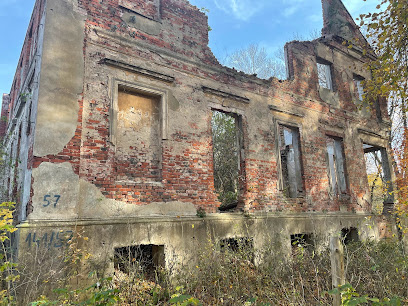
Pole biwakowe
Experience the beauty of nature at Pole Biwakowe, a serene tourist attraction in Drawno, perfect for outdoor enthusiasts and relaxation seekers.
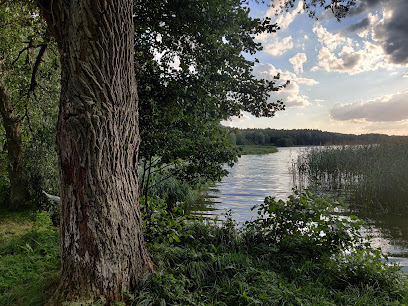
DĘBSKO, głaz pamiątkowy
Discover Dębsko, a serene memorial stone attraction in Poland, blending rich history with breathtaking natural scenery for an unforgettable experience.
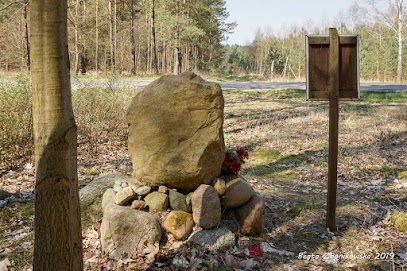
Fontanna
Discover the serene beauty of Fontanna in Drawno, a captivating fountain surrounded by rich history and charming architecture.

Most rowerowy na Drawie w pobliżu jeziora Okra
Explore Most Rowerowy na Drawie near Lake Okra, a tranquil destination for rowing and nature lovers in Drawsko Pomorskie.

Przeprawa Brodem na strumieniu z Jeziora Wierzchniego w pobliżu ujścia do Drawy
Discover the serene beauty of the Przeprawa Brodem near Wierzchnie Lake, a perfect escape into nature's tranquility in Poland.
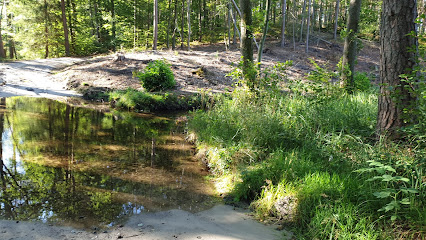
Kaplica z początku XXw
Discover the serene beauty and historical charm of the early 20th-century chapel in Drawno, a must-visit cultural attraction in Poland.

Pałacyk nad Drawą
Explore the historical beauty and serene landscapes of Pałacyk nad Drawą, a hidden gem in Poland perfect for relaxation and exploration.

BARNIMIE, głaz Solarzy
Explore the breathtaking natural beauty and serene landscapes of Barnimie, Solarzy, a hidden gem in Poland perfect for relaxation and adventure.

ŚWIĘCIECHÓW, głaz Wojciecha
Experience the captivating Głaz Wojciecha in Święciechów, a legendary boulder that embodies the charm and folklore of Poland's picturesque countryside.
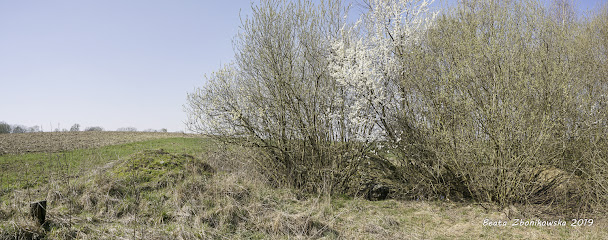
Rezerwat przyrody Drawski Matecznik
Explore the enchanting Drawski Matecznik Nature Preserve, a sanctuary of tranquility and biodiversity in Poland's lush landscapes, perfect for nature lovers and adventure seekers.
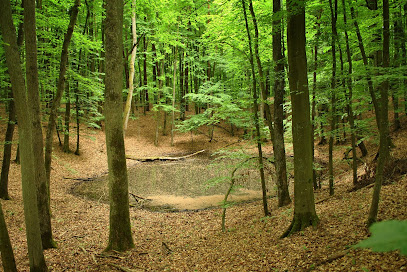
Drawski Kamien Meteorologiczny
Discover the unique Drawski Kamien Meteorologiczny, a serene spot where nature meets meteorological science in Drawsko Pomorskie, Poland.

Essential places to dine
Restauracja Różana
Experience the essence of Polish cuisine at Restauracja Różana - where tradition meets elegance in every dish.

Specjały Regionalne
Experience authentic Polish cuisine at Specjały Regionalne - where tradition meets taste in the heart of Warsaw.

Kogel Mogel
Experience authentic Polish flavors at Kogel Mogel in Kraków's historic Old Town – where tradition meets modern culinary excellence.

Ryby Lubie
Experience authentic Polish seafood at Ryby Lubie - where culinary excellence meets charming ambiance in Lubieszewo.

Gospoda Kwiaty Polskie
Experience authentic Polish cuisine at Gospoda Kwiaty Polskie in Warsaw - where tradition meets taste.

N31 Restaurant & Bar
Experience fine dining at N31 Restaurant & Bar in Warsaw – where traditional Polish flavors meet modern culinary artistry.

Restauracja Cyrano de Bergerac
Discover the best of French cuisine in Kraków at Restauracja Cyrano de Bergerac, where every meal is a celebration of flavor and elegance.

Muzealna
Discover exquisite Polish cuisine at Muzealna, where tradition meets modernity in the heart of Warsaw's vibrant cultural scene.

Restauracja Słoneczko
Experience exquisite Polish cuisine at Restauracja Słoneczko by the scenic Drawa River in Drawsko Pomorskie.

Steak House &. Grill
Discover the ultimate steak experience at Steak House & Grill in Drawsko Pomorskie – where quality meets flavor in every bite.

Folwark Na Półwyspie
Discover tranquility at Folwark Na Półwyspie – a charming hotel offering outdoor adventures, local cuisine, and serene accommodations in Uraz.

Zachcianek
Experience authentic Polish cuisine at Zachcianek in Warsaw's historic Old Town, renowned for its delicious pierogi and warm ambiance.

Restauracja Veranda
Experience exquisite modern European cuisine amidst the scenic beauty of Gudowo at Restauracja Veranda – a true gem for food lovers.

Potrawy z nad Drawy
Discover authentic Polish cuisine at Potrawy z nad Drawy in Zatom – where tradition meets flavor in every dish.

Motel Restauracja - Kompleks Turystyczny Drawa
Discover the heart of Polish cuisine at Motel Restauracja - Kompleks Turystyczny Drawa in beautiful Przesieki.

Markets, malls and hidden boutiques
Drawa National Park
Discover the serene beauty of Drawa National Park, a natural paradise in Poland perfect for hiking, kayaking, and exploring wildlife.
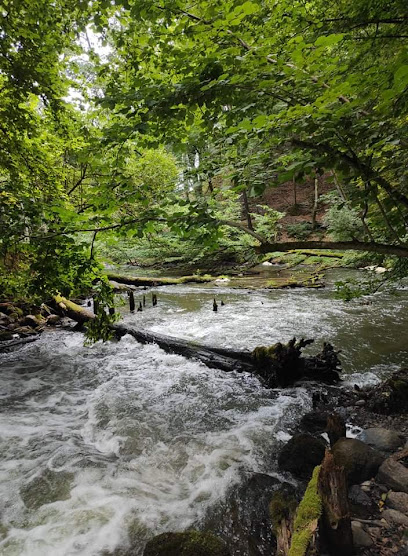
Coffee and Fashion
Explore Coffee and Fashion in Kalisz Pomorski - where stylish clothing meets a cozy café atmosphere, perfect for fashion enthusiasts and coffee lovers.

Delikatesy Centrum
Discover the flavors of Poland at Delikatesy Centrum, a charming grocery store and deli in Drawno offering fresh local produce and gourmet delights.

Biedronka
Discover affordable shopping and local flavors at Biedronka, the essential discount supermarket in Drawno, Poland.

Petrol Station ORLEN
Discover the convenience of ORLEN Petrol Station in Drawno, your go-to stop for fuel, groceries, and travel essentials in Poland.

Pracownia Krawiecka Babette - Style
Discover the unique blend of contemporary and traditional Polish fashion at Pracownia Krawiecka Babette - Style in Kalisz Pomorski.
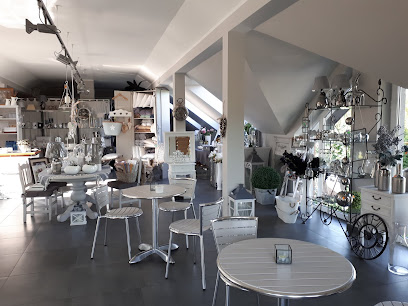
Plaża miejska Drawno
Enjoy the sun, sand, and serenity at Plaża Miejska Drawno, a charming beach destination nestled in beautiful Polish landscapes.

Lisowska Józefa. Cukiernia
Experience the sweetness of Polish desserts at Lisowska Józefa in Drawno, where every treat is crafted to perfection.

Manhattan. Sklep przemysłowy
Experience local culture at Manhattan General Store in Drawno, where unique products and warm hospitality come together for an unforgettable visit.

Żabka
Explore Żabka in Drawno - your go-to grocery store for local snacks, drinks, and a taste of Polish hospitality.

Dino
Discover the local flavors and vibrant atmosphere at Dino, Choszczno's premier supermarket, butcher shop, and grocery destination.

Lewiatan
Discover the essence of Polish cuisine at Lewiatan, your friendly grocery store in Lubieniów, offering local produce and delightful regional specialties.

Pod Dębem
Discover authentic Polish flavors at Pod Dębem, a charming grocery store in Dominikowo offering fresh produce and local delicacies.

,,Owocowy Sad. Letnia strefa wypoczynku''.
Discover the charming Owocowy Sad in Drawno, a delightful ice cream shop offering a wide variety of artisanal flavors in a cozy setting.
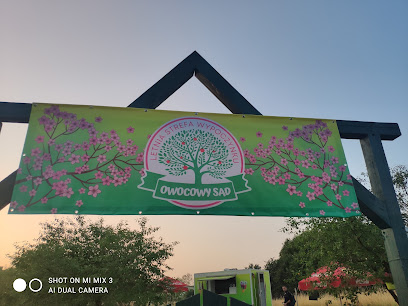
Tech-Dąb Dealer Stihl
Explore Tech-Dąb Dealer Stihl in Drawno for top-quality lawn care equipment and expert repair services in a welcoming outlet store.

Essential bars & hidden hideouts
Bar Na Zakręcie
Experience authentic Polish cuisine in Słutowo at Bar Na Zakręcie, where warm hospitality meets delicious dining in a cozy atmosphere.

Bar U Iwony
Discover Bar U Iwony: A lively bar in Drawsko Pomorskie perfect for drinks, socializing, and enjoying the local atmosphere.

Dramburger - Burgers & Drinks - Restaurant
Discover Dramburger in Drawsko Pomorskie: Where American burgers meet a cozy bistro vibe for an unforgettable dining experience.

Bar u KOTA
Discover authentic Polish cuisine and a vibrant atmosphere at Bar u KOTA, a charming bar and restaurant in Złocieniec, Poland.

Bar Nad Żerdnem / Ryby smażone/wędzone
Discover the taste of freshly fried and smoked fish at Bar Nad Żerdnem in Stare Drawsko, where local flavors meet cozy ambiance.

Havana PUB
Discover Havana PUB in Choszczno, a lively pub and restaurant offering delicious food, drinks, and a vibrant atmosphere at affordable prices.

PUB BAŁYK
Discover the vibrant atmosphere of PUB BAŁYK in Drawsko Pomorskie, where local culture meets relaxation and entertainment.

Bar Dwie Kozy
Experience the cozy charm of Bar Dwie Kozy in Danków, where local flavors and friendly vibes meet for a perfect evening out.

Pod Lipką
Experience the charm of Drawno at Pod Lipką, a cozy bar offering local drinks and a welcoming atmosphere for every traveler.

Bar Lubno
Discover the cozy charm of Bar Lubno, a perfect lounge for relaxation and socializing in the heart of Lubno.

Kebab
Experience the authentic tastes of Middle Eastern cuisine at Konotop's beloved Kebab Bar, where flavor and hospitality come together.

Knajpka przy plaży
Discover the charm of Knajpka przy plaży, a cozy bar by the beach in Lubiewo, perfect for relaxation and stunning sunset views.

PieroGar
Discover the charm of PieroGar in Drawno, where delightful drinks and a cozy atmosphere await every visitor.

RedCrow
Discover the cozy atmosphere and delightful drinks at RedCrow, the perfect bar in Drawsko Pomorskie for tourists seeking relaxation and local culture.

PRZERWA
Discover PRZERWA, a cozy bar in Drawsko Pomorskie, where local charm meets delightful drinks for a perfect evening out.

Local Phrases about Drawa National Park
-
- HelloCześć
[cheshch] - GoodbyeDo widzenia
[doh veed-zen-ya] - YesTak
[tahk] - NoNie
[nyeh] - Please/You're welcomeProszę
[proh-sheh] - Thank youDziękuję
[jen-koo-yeh] - Excuse me/SorryPrzepraszam
[pzeh-prah-shahm] - How are you?Jak się masz?
[yahk shyeh mahsh] - Fine. And you?Dobrze. A ty?
[doh-bzheh. ah tih] - Do you speak English?Czy mówisz po angielsku?
[chy mooh-veesh poh ahn-gyehl-skoo] - I don't understandNie rozumiem
[nyeh roh-zoo-myem]
- HelloCześć
-
- I'd like to see the menu, pleaseChciałbym zobaczyć menu, proszę
[h-chah-woom zoh-bah-chich meh-noo, proh-sheh] - I don't eat meatNie jem mięsa
[nyeh yem myen-sah] - Cheers!Na zdrowie!
[nah zdroh-vee-eh] - I would like to pay, pleaseChciałbym zapłacić, proszę
[h-chah-woom zah-plah-chich, proh-sheh]
- I'd like to see the menu, pleaseChciałbym zobaczyć menu, proszę
-
- Help!Pomoc!
[po-mohts] - Go away!Odejdź!
[oh-deyjsh] - Call the Police!Zadzwoń po policję!
[zahd-vohn poh po-leet-syeh] - Call a doctor!Zadzwoń po lekarza!
[zahd-vohn poh leh-kah-zah] - I'm lostZgubiłem się
[zgoo-byeh-wem shyeh] - I'm illJestem chory
[yes-tem hoh-rih]
- Help!Pomoc!
-
- I'd like to buy...Chciałbym kupić...
[h-chah-woom koo-peech] - I'm just lookingTylko się rozglądam
[tih-ko shyeh rohz-gwon-dahm] - How much is it?Ile to kosztuje?
[ee-leh toh kohs-too-yeh] - That's too expensiveTo jest za drogie
[toh yest zah droh-gyeh] - Can you lower the price?Czy można obniżyć cenę?
[chy moh-nah ohb-nee-zhich tseh-neh]
- I'd like to buy...Chciałbym kupić...
-
- What time is it?Która jest godzina?
[ktoo-rah yest goh-dzee-nah] - It's one o'clockJest pierwsza
[yesst pyehr-vshah] - Half past (10)Pół do dziesiątej
[poow doh jeh-shon-teh] - MorningRano
[rah-noh] - AfternoonPopołudnie
[poh-poo-wood-nyeh] - EveningWieczór
[vyeh-choor] - YesterdayWczoraj
[v-choh-rye] - TodayDziś
[jeesh] - TomorrowJutro
[yoo-troh] - 1Jeden
[yeh-den] - 2Dwa
[dvah] - 3Trzy
[tshih] - 4Cztery
[ch-teh-rih] - 5Pięć
[pyen-ch] - 6Sześć
[shesh-ch] - 7Siedem
[syeh-dem] - 8Osiem
[oh-shem] - 9Dziewięć
[dzyeh-vee-nyeh] - 10Dziesięć
[jeh-shon-tyeh]
- What time is it?Która jest godzina?
-
- Where's a/the...?Gdzie jest...
[gdzyeh yest] - What's the address?Jaki jest adres?
[yah-ki yest ah-drehss] - Can you show me (on the map)?Czy możesz mi pokazać (na mapie)?
[chy mo-zhesh mee poh-kah-zahch (nah mah-pee-eh)] - When's the next (bus)?Kiedy jest następny (autobus)?
[kyeh-deh yest nah-stehp-ny (ow-toh-boos)] - A ticket (to ....)Bilet (do ....)
[bee-let (doh)]
- Where's a/the...?Gdzie jest...
History of Drawa National Park
-
The area now known as Drawa National Park has evidence of human settlement dating back to the Neolithic period. Archaeological finds, including stone tools and pottery, suggest that early communities thrived here due to the abundance of natural resources such as water, game, and fertile land.
-
During the medieval period, the region surrounding Drawa National Park was part of the territory controlled by the Templar Order. The Templars established several settlements and fortifications in the area. Notably, the remnants of a Templar stronghold can be found near the village of Stare Drawsko, providing a glimpse into the military and administrative importance of the region during this time.
-
In the 13th and 14th centuries, under the rule of the Piast Dynasty, the forests of the Drawa region were subject to strict forest laws. These laws were designed to protect the valuable timber resources and game that were essential for the kingdom's economy. The royal decrees of this period laid the groundwork for the later conservation efforts that would shape the park.
-
In the mid-17th century, the area now encompassed by Drawa National Park was significantly impacted by the Swedish invasion of Poland, known as the Swedish Deluge. The region saw numerous skirmishes and the movement of troops, which led to widespread destruction of settlements and natural landscapes. This period of turmoil left its mark on the local culture and heritage.
-
In the 18th century, the region came under Prussian control, and the Prussian administration implemented advanced forestry management practices. This period saw the introduction of scientific methods for timber harvesting and forest regeneration, which played a crucial role in maintaining the health and diversity of the woodland ecosystems that are now protected within Drawa National Park.
-
During World War II, the dense forests of the Drawa region provided cover and refuge for resistance fighters and partisans. The park's remote and rugged terrain was ideal for guerilla warfare against occupying forces. Numerous skirmishes and sabotage operations took place within the park, contributing to the broader efforts of the Polish resistance.
-
Drawa National Park was officially established in 1990, with the goal of preserving the unique natural and cultural heritage of the region. The park protects diverse ecosystems, including pristine rivers, lakes, and forests. It also serves as a living museum of the various historical epochs that have shaped the landscape and culture of the area.
Drawa National Park Essentials
-
Drawa National Park is located in the West Pomeranian and Lubusz Voivodeships of Poland. The nearest international airport is Poznań-Ławica Airport, approximately 130 kilometers away. From Poznań, you can take a train to Krzyż Wielkopolski, which is the nearest major town to Drawa National Park. The journey by train takes about 2 hours. From Krzyż Wielkopolski, you can take a taxi or a local bus to the park entrance.
-
Within Drawa National Park, the best way to get around is by foot, bicycle, or kayak, given the park's extensive network of trails and waterways. For longer distances, local taxis can be hired. During the summer months, some areas of the park are accessible by seasonal buses. Renting a car is also an option for exploring the surrounding regions at your own pace.
-
The official currency in Poland is the Polish Złoty (PLN). Credit cards are accepted in most hotels, restaurants, and shops around the park, but it is advisable to carry some cash, especially for smaller establishments and rural areas. ATMs are available in nearby towns such as Krzyż Wielkopolski, but it is wise to withdraw sufficient cash before heading into the park.
-
Drawa National Park is generally a safe destination for tourists. However, it is advisable to take standard precautions such as avoiding isolated areas at night and keeping an eye on your belongings in crowded places. There are no specific high-crime areas targeting tourists within the park, but always stay vigilant and aware of your surroundings.
-
In case of emergency, dial 112 for immediate assistance. The nearest medical facilities are located in the towns surrounding the park, such as Krzyż Wielkopolski. It is recommended to have travel insurance that covers medical emergencies. For minor health issues, there are pharmacies in the nearby towns where you can purchase over-the-counter medications.
-
Fashion: Do wear comfortable, weather-appropriate clothing and sturdy hiking shoes. Avoid wearing flashy or impractical clothing. Religion: Do respect local customs and traditions if visiting nearby religious sites. Public Transport: Do be respectful and patient when using local buses or taxis. Don't play loud music or eat on public transport. Greetings: Do greet people with a polite 'Dzień dobry' (Good day) or a handshake. Eating & Drinking: Do try local delicacies and accept food offerings graciously. Don't leave food waste or litter in the park; always use designated bins.
-
To experience Drawa National Park like a local, consider participating in guided canoe trips on the Drawa River, which provide an immersive way to explore the park's natural beauty. Visit local markets in nearby towns to buy fresh produce and traditional Polish goods. Engage with locals who are often friendly and willing to share insights about the area's history and culture. Don't miss visiting the park's educational centers to learn more about its unique ecosystems and conservation efforts.
Nearby Cities to Drawa National Park
-
Things To Do in Szczecin
-
Things To Do in Bydgoszcz
-
Things To Do in Torun
-
Things To Do in Berlin
-
Things To Do in Potsdam
-
Things To Do in Gdansk
-
Things To Do in Sopot
-
Things To Do in Wroclaw
-
Things To Do in Elblag
-
Things To Do in Dresden
-
Things To Do in Rostock
-
Things To Do in Lodz
-
Things To Do in Opole
-
Things To Do in Olsztyn
-
Things To Do in Leipzig







